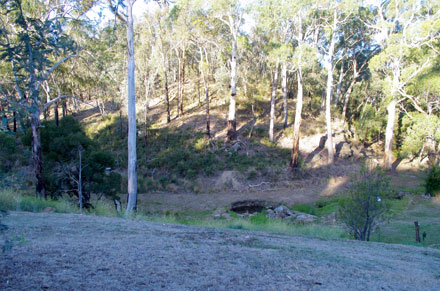
Australia’s peak farming body has backed growing trees on farms, emphasising that “trees are not the enemy of Australian farmers”. Source: Philip Hopkins
The president of the National Farmers’ Federation, Fiona Simson, emphasised she wanted to break down the ideological barriers between agriculture and forestry.
She was addressing a recent forum in Canberra held by the Australian Forest Products Association, which has been a member of the NFF since 2015.
Ms Simson said the NFF was excited to work with the AFPA on a “rejuvenated quest to see farm forestry, commercial tree plantings, become a larger part of our farm landscape”.
“Trees are not our enemy … nothing could be further from the truth,” she said, despite farmers and foresters competing for land and to a lesser extent water.
“To some extent this is true … but we have more in common than not.”
Ms Simson said the policy platforms and advocacy battlegrounds of the two industries were “largely the same”.
Like foresters, farmers needed markets, with market access via preferential trade agreements and tacking non-tariff barriers, she said. But to bolster farm forestry initiatives, the shortcomings of the past must be addressed.
Tensions grew between the sectors due to managed investment schemes (MIS) 15-20 years ago, where many farmers complained that the MIS companies, cashed up with tax benefits, were able to outbid farmers for land.
Ms Simson said farm forestry had not yet reached its potential. This was due to factors such as uncertainty around the process of recognising carbon rewards or credits; a lack of understanding of how to harvest and market timber; inadequate timber harvest and haul infrastructure; the difficulty in growing and harvesting a large enough haul to make farm forestry economical; and market access.
These challenges were not insurmountable and international counterparts showed the way. “In Scandinavia, southern parts of the US and in New Zealand there is a long history of wood supply from a large number of small private landholders and farmers, as well as the development of marketing cooperatives,” she said.
“In Sweden and the US, 50 per cent of forest land is owned by individuals and families. In NZ, almost 600,000 hectares, or 34 per cent of the plantation forest, is owned by individuals with parcels no more than 10,000 hectares.”
Ms Simson said farm forestry had the potential, through carbon sequestration, to help agriculture lower its greenhouse emissions. A social licence to operate was becoming a “larger issue, almost as each day passes”.
“Overall, for farm forestry to be successful in this country, we need to foster strong linkages between farmers and the forestry sector,” she said, which included backing for AFPA’s plan for an integrated farm forestry program.
This could also help boost the value of agricultural production, which was $60 billion in 2016-17. “We have a vision for agriculture to be a $100 billion industry by 2030,” she said, and farm forestry had a role in this.
Ms Simson said Landcare had shown farmers the benefits of trees on farms. These included shade and shelter for livestock, soil protection, salinity control and the promotion of natural biodiversity.
Farm forestry offered the opportunity to incorporate softwood plantations on a commercial scale into existing farm systems. “It really offers a win-win opportunity for farmers and foresters,” she said.
Ms Simson said the NFF sympathised with forestry having to put up with massive timber imports that could be produced arguably here in a more sustainable and economic way.
“We absolutely support a strong vibrant timber sector in Australia and we simply must have a robust, transparent and equitable system to prevent illegal dumping of product in the domestic market,” she said.
“This goes for timber products like paper as much as it does for tomatoes from Italy or dried fruit from Turkey.”
Ms Simson said farming and forestry had many common policy issues. These included efficient infrastructure and supply chains, energy market certainty, digital connectivity, research and development, technology and labour.







